
The Defense Information Systems Agency (DISA), known as the Defense Communications Agency (DCA) until 1991, is a United States Department of Defense (DoD) combat support agency composed of military, federal civilians, and contractors. DISA provides information technology (IT) and communications support to the President, Vice President, Secretary of Defense, the military services, the combatant commands, and any individual or system contributing to the defense of the United States.
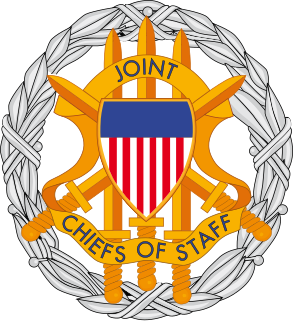
The Joint Chiefs of Staff (JCS) is the body of the most senior uniformed leaders within the United States Department of Defense, that advises the president of the United States, the secretary of defense, the Homeland Security Council and the National Security Council on military matters. The composition of the Joint Chiefs of Staff is defined by statute and consists of a chairman (CJCS), a vice chairman (VJCS), the service chiefs of the Army, Marine Corps, Navy, Air Force, Space Force, and the chief of the National Guard Bureau. Each of the individual service chiefs, outside their JCS obligations, work directly under the secretaries of their respective military departments, e.g. the secretary of the Army, the secretary of the Navy, and the secretary of the Air Force.

Gordon Aylesworth Blake was a lieutenant general in the United States Air Force who served as director of the National Security Agency from 1962 to 1965.

Kevin Patrick "Chilli" Chilton is an American mechanical engineer and retired United States Air Force four-star general, test pilot, and NASA astronaut. His last assignment was as commander of U.S. Strategic Command from October 3, 2007, to January 28, 2011. Prior to his appointment to general officer ranks, Chilton spent 11 years of his military career as a NASA astronaut. He retired from the Air Force on February 1, 2011, after having achieved the highest rank of any military astronaut. On January 30, 2012, General Chilton was named to the board of directors of Orbital Sciences Corporation.

United States Strategic Command (USSTRATCOM) is one of the eleven unified combatant commands in the United States Department of Defense. Headquartered at Offutt Air Force Base, Nebraska, USSTRATCOM is responsible for strategic deterrence, global strike, and operating the Defense Department's Global Information Grid. It also provides a host of capabilities to support the other combatant commands, including integrated missile defense; and global command, control, communications, computers, intelligence, surveillance, and reconnaissance (C4ISR). This command exists to give national leadership a unified resource for greater understanding of specific threats around the world and the means to respond to those threats rapidly.

The Air Staff is one of the Department of the Air Force's two statutorily designated headquarters staffs: the other staff is the Office of the Secretary of the Air Force, also known as the Secretariat. The Air Staff is headed by the Chief of Staff of the Air Force. The Air Staff is primarily composed of uniformed U.S. Air Force officials who assist the Chief of Staff in carrying out his dual-hatted role: as the principal military advisor to the Secretary of the Air Force, and as a member of the Joint Chiefs of Staff.
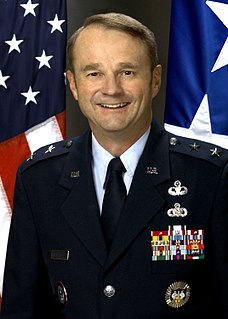
Dr. Dale W. Meyerrose, Major General (Retired) was the first President-appointed, Senate-confirmed Associate Director of National Intelligence/Intelligence Community Chief Information Officer (CIO) and Information Sharing Executive for the Director of National Intelligence (DNI).

The United States Air Force's 688th Cyberspace Wing is a cyberspace operations unit located at Joint Base San Antonio (Lackland), Texas.
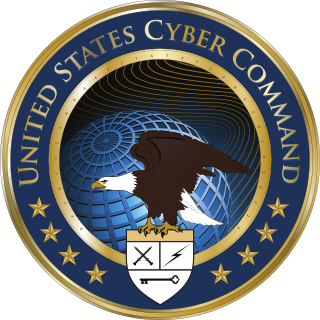
United States Cyber Command (USCYBERCOM) is one of the eleven unified combatant commands of the United States Department of Defense (DoD). It unifies the direction of cyberspace operations, strengthens DoD cyberspace capabilities, and integrates and bolsters DoD's cyber expertise.

Richard E. Webber is a retired United States Air Force major general. He was the first commander of the Twenty-Fourth Air Force, which is focused on cyberspace operations. The Twenty-Fourth Air Force is located in San Antonio, Texas, and stood up in place of the originally proposed larger Major Command organization, Air Force Cyber Command. Webber graduated from the United States Air Force Academy in 1975 and has worked in the space and missile career field.

William J. "Bill" Donahue is a retired lieutenant general for the United States Air Force who transformed networks and communications during his long career. He retired in May 2000 as the director of communications and information at Air Force Headquarters and commander of the Air Force Communications and Information Center in Washington, D.C. During his 33-year Air Force career, Donahue served in a variety of communications, information, command and control positions at virtually every level in the Air Force. During his active-duty career, Donahue led the Internet and information technology transformation in the Air Force.

U.S. Army Lieutenant General Alan R. Lynn was the Director, Defense Information Systems Agency at Fort Meade, MD.

Vincent Raymond Stewart is a retired Jamaican American lieutenant general in the United States Marine Corps who most recently served as Deputy Commander at United States Cyber Command. He previously served as the 20th Director of the Defense Intelligence Agency (DIA). LtGen Stewart, who held that post from January 23, 2015 through October 3, 2017, was the first African American, first Jamaican American and first Marine to hold the position of Director of the DIA.

Brigadier General Gregory (Greg) J. Touhill is president of AppGate Federal Group . He was previously appointed by President Barack Obama as the first Federal Chief Information Security Officer of the United States, stepping down in January, 2017. He was previously the Deputy Assistant Secretary, Office of Cybersecurity and Communications, National Programs and Protection Directorate, Department of Homeland Security. While at DHS he concurrently served as Director of the National Cybersecurity and Communications Integration Center (NCCIC) during 2014–2015.
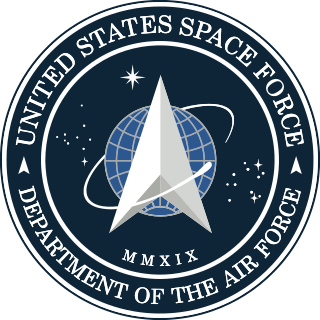
The United States Space Force (USSF) is the space service branch of the U.S. Armed Forces, one of the eight U.S. uniformed services, and the world's only independent space force. Along with its sister-branch, the U.S. Air Force, the Space Force is part of the Department of the Air Force, one of the three civilian-led military departments within the Department of Defense. The Space Force, through the Department of the Air Force, is overseen by the Secretary of the Air Force, a civilian political appointee who reports to the Secretary of Defense, and is appointed by the President with Senate confirmation. The military head of the Space Force is the Chief of Space Operations who is typically the most senior Space Force officer. The Chief of Space Operations exercises supervision over the Space Force's units and serves as one of the Joint Chiefs of Staff.

Major General Robert Alan "Rosie" Rosenberg of United States Air Force was Director of Defense Mapping Agency from July 1985 to September 1987. Throughout his 30-year career with the U.S. Air Force, he was instrumental to the U.S. satellite program. National Geospatial-Intelligence Agency inducted him into its Hall of Fame in 2005.
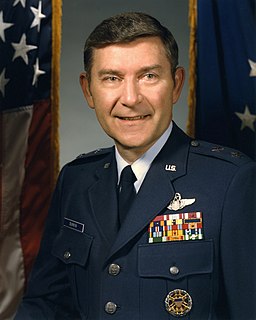
Major General Robert Francis Durkin of the United States Air Force was Director of Defense Mapping Agency from October 1987 to June 1990. As director, Durkin restructured the Defense Mapping Agency's international and domestic training in the production and exploitation of geospatial information.

Space Operations Command (SpOC) is the United States Space Force's space operations, cyber operations, and intelligence field command. It is headquartered at Peterson Space Force Base, Colorado and serves as the U.S. Space Force's service component to United States Space Command. Space Operations Command consists of Space Operations Command West, its mission deltas, and garrison commands.

The structure of the United States Space Force refers to the different types of organizational units in the service: the Space Staff, the field commands, and the space deltas.
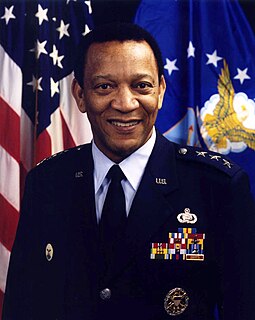
Albert Joseph Edmonds is a retired United States Air Force lieutenant general who served as director of the Defense Information Systems Agency from 1994 to 1997. He was born in Columbus, Georgia. Edmonds was commissioned in 1964 upon graduation from the Air Force Officer Training School.
































